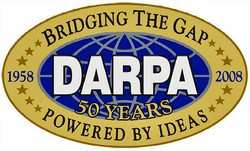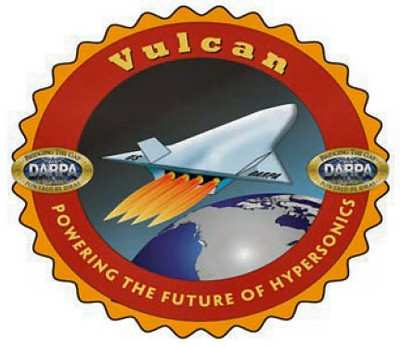DARPA Developing The Vulcan Engine For Mach 4 Aircraft
 The F-22 Raptor and F-18 Hornet fighter jets are fast,
screaming through the air at twice the speed of sound, but the
SR-71 Blackbird was faster, flying Mach 3 until mechanical problems
and exorbitant operating costs forced it out of service in the late
1990s.
The F-22 Raptor and F-18 Hornet fighter jets are fast,
screaming through the air at twice the speed of sound, but the
SR-71 Blackbird was faster, flying Mach 3 until mechanical problems
and exorbitant operating costs forced it out of service in the late
1990s.
Now, the Defense Advanced Research Projects Agency is striving to
build an engine that will propel a hypersonic jet at Mach 4 and
faster, while also bringing new efficiencies to ships and ground
vehicles.
DARPA's Vulcan program kicked off this spring and aims to create
the supersonic capability needed to engage targets or perform
reconnaissance missions when time is of the essence, Thomas
Bussing, program manager, told American Forces Press Service.
"Most of our aircraft are subsonic airplanes, so it takes them a
long time to get where they need to be," Bussing said. "If you
could travel beyond Mach 4, you could get there in potentially
one-fourth the time it would take to get there with a conventional
aircraft."
Increased airspeed will translate into more timely battlefield
awareness for ground troops and an improved strike capability that
takes out enemy forces before they can attack, Bussing said.
Until now, the science required to provide this level of
capability eluded engineers and scientists alike.
The Vulcan is being developed as the first propulsion system to
combine a full-scale, off-the-shelf turbine like those used in F-22
and F-18 fighter jets with a revolutionary new constant volume
combustion engine. The dual-mode engine will basically consist of a
constricted tube that compresses air as it combusts fuel.
"The CVC is really a paradigm shift in the way you burn fuel and
air," Bussing explained. "Instead of burning fuel like you do in an
automobile engine in a slow-burning process, the idea is to use a
shock wave so you essentially get instantaneous combustion. If you
can do that, it is a more efficient cycle, and you can extract more
useful work."
These enhancements are expected to be able to accelerate the
aircraft from zero to Mach 4-plus in a matter of minutes, Bussing
said. The turbine will generate the initial low-speed propulsion,
with the CVC engine kicking in at supersonic speeds.

But the technology being developed promises other benefits, too,
he said. It will make ships' propulsion and power engines, as well
as ground-based power generators, more efficient. Other
applications include using shockwave technology to cut through the
ash that builds up on coal power plant heat exchangers, boosting
efficiency by 2 to 5 percent.
Those same shockwaves have other military applications, such as
nonlethal weapons and psychological operations tools. Channeled
through a series of tubes, for example, the waves will emit
ear-shattering blasts. Fired at exactly the right sequence, they
can create an amplitude and pulse that makes an intended target's
stomach turn nauseous. "It's a noise generator that is very
powerful," Bussing said. "If used correctly, you can generate a
very effective nonlethal response."
The Vulcan will have application in production processes, too,
he said. The waves it generates can accelerate particles to the
extremely high speeds needed to create carbide, oxide or nitrite
coatings.
"There is a whole series of products and techniques this concept
enables," Bussing said. "This technology has a broad range of
potential applications."
But for initial development, DARPA is focusing on applying the
new technology in a multiple-Mach jet engine capable of supporting
intelligence, surveillance and reconnaissance and strike
missions.
Getting to this point took 15 years of rigorous testing, and
Bussing estimated it will take another four to five years to
complete the four-phased development program.
Thanks to
Donna Miles, American Forces Press Service
 ANN's Daily Aero-Term (04.26.24): DETRESFA (Distress Phrase)
ANN's Daily Aero-Term (04.26.24): DETRESFA (Distress Phrase) Aero-News: Quote of the Day (04.26.24)
Aero-News: Quote of the Day (04.26.24) ANN's Daily Aero-Term (04.27.24): Direct
ANN's Daily Aero-Term (04.27.24): Direct ANN's Daily Aero-Linx (04.27.24)
ANN's Daily Aero-Linx (04.27.24) Aero-News: Quote of the Day (04.27.24)
Aero-News: Quote of the Day (04.27.24)




